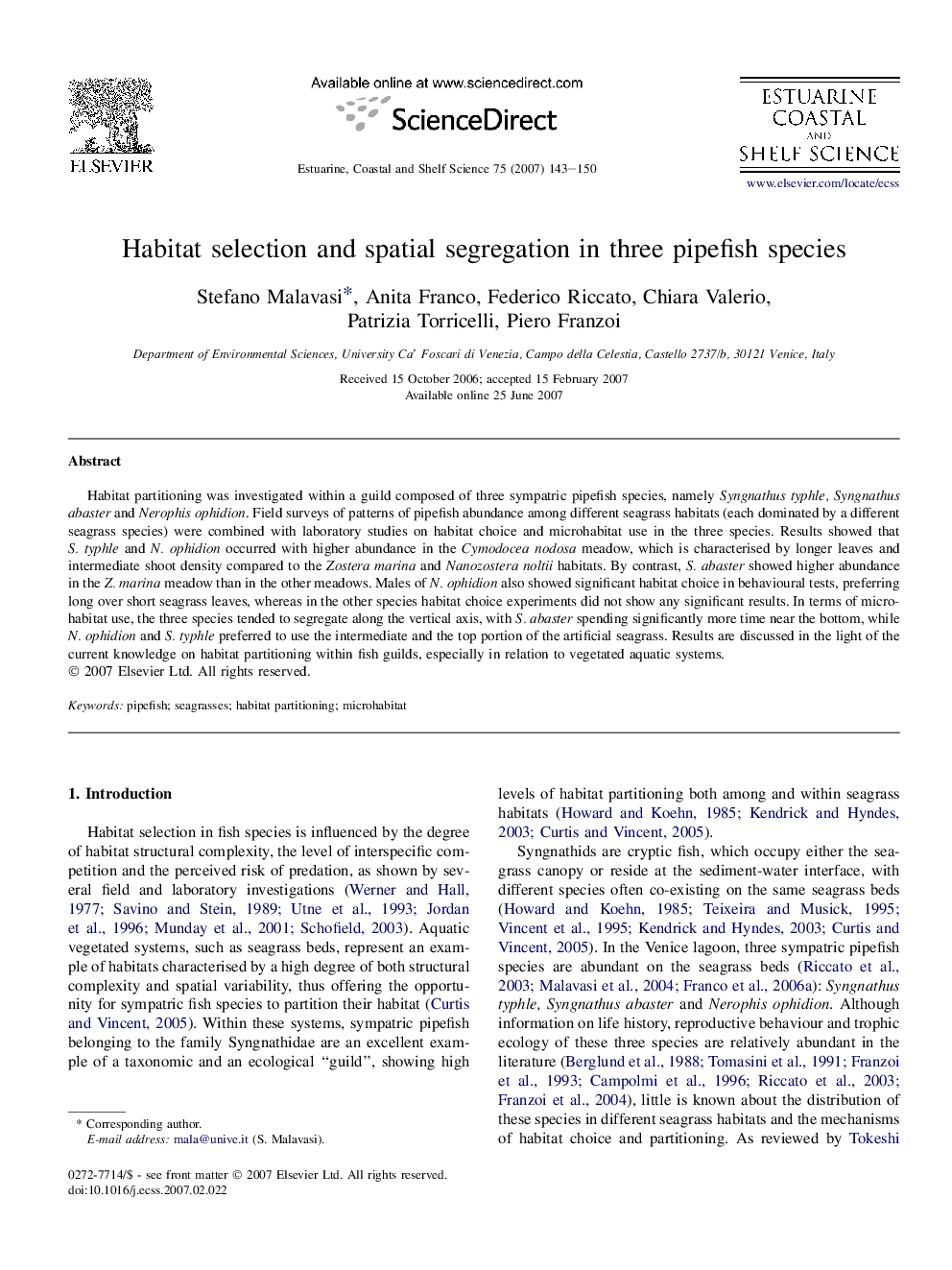| Article ID | Journal | Published Year | Pages | File Type |
|---|---|---|---|---|
| 4541729 | Estuarine, Coastal and Shelf Science | 2007 | 8 Pages |
Habitat partitioning was investigated within a guild composed of three sympatric pipefish species, namely Syngnathus typhle, Syngnathus abaster and Nerophis ophidion. Field surveys of patterns of pipefish abundance among different seagrass habitats (each dominated by a different seagrass species) were combined with laboratory studies on habitat choice and microhabitat use in the three species. Results showed that S. typhle and N. ophidion occurred with higher abundance in the Cymodocea nodosa meadow, which is characterised by longer leaves and intermediate shoot density compared to the Zostera marina and Nanozostera noltii habitats. By contrast, S. abaster showed higher abundance in the Z. marina meadow than in the other meadows. Males of N. ophidion also showed significant habitat choice in behavioural tests, preferring long over short seagrass leaves, whereas in the other species habitat choice experiments did not show any significant results. In terms of microhabitat use, the three species tended to segregate along the vertical axis, with S. abaster spending significantly more time near the bottom, while N. ophidion and S. typhle preferred to use the intermediate and the top portion of the artificial seagrass. Results are discussed in the light of the current knowledge on habitat partitioning within fish guilds, especially in relation to vegetated aquatic systems.
